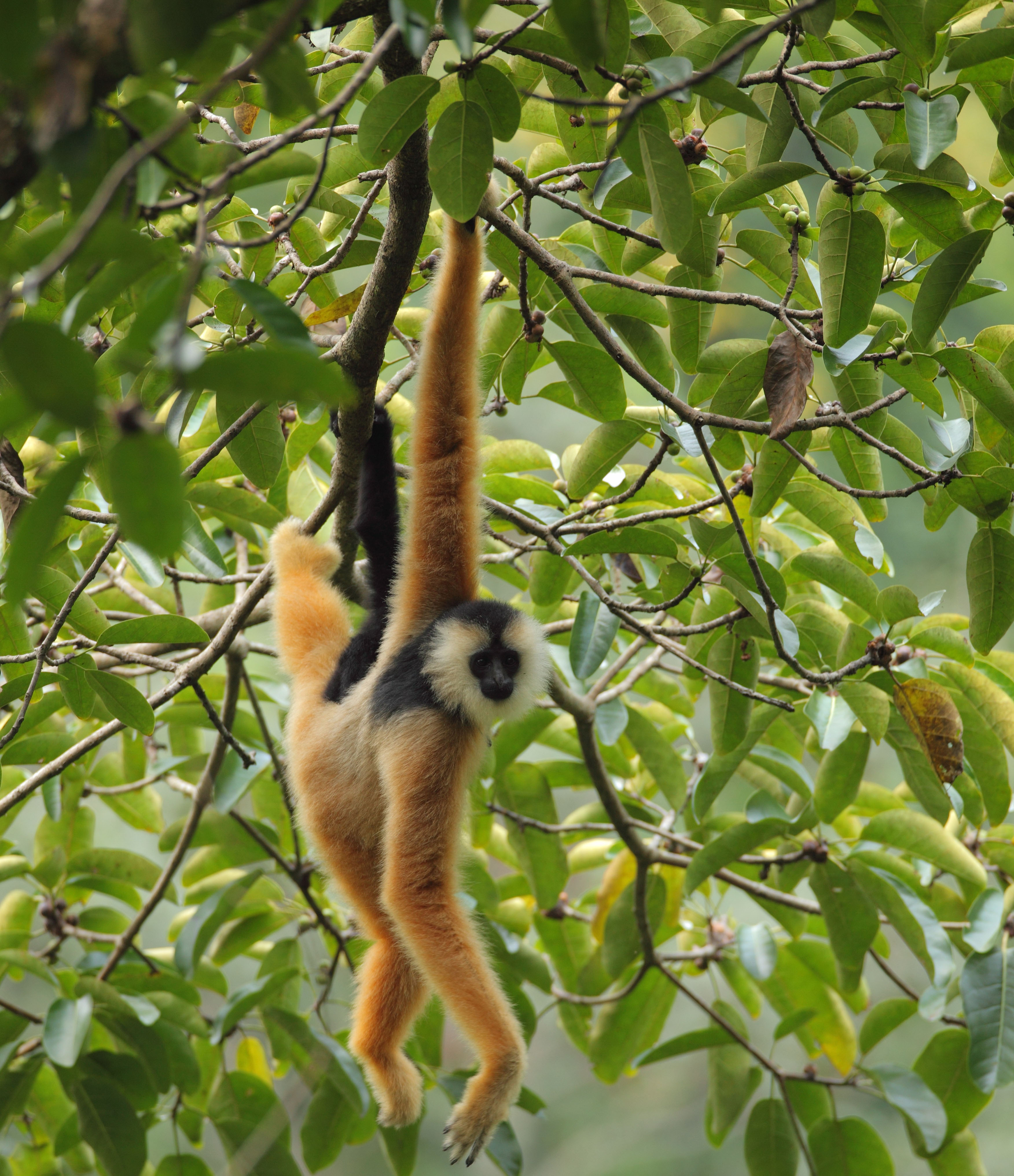Great Ape Conservation Fund 2015 |
|
| Total Number of Grants Awarded *Includes 1 amended multi-year cooperative agreement |
29* |
| Total Funds Distributed Through Grants | $1,966,050 |
| Total Partner Contributions Leveraged by Grants | $3,377,689 |
| Total Number of Countries that Received Program Support | 14 |
Apes, by their very nature, are extremely vulnerable. They live in small groups, grow relatively slowly, don’t produce many offspring, and have complex social relationships. Today, these highly intelligent, charismatic species are threatened by many factors, including destruction of their forest habitats in Africa and Asia, hunting for bushmeat and the illegal pet trade, and disease. All of the world’s ape species are at risk of extinction.
In 2000, the U.S. Congress passed the Great Ape Conservation Act and since then the U.S. Fish and Wildlife Service (USFWS) has been building the capacity of governments, non-governmental organizations (NGOs) and local communities to address the threats to great apes through the Great Ape Conservation Fund. USFWS supports efforts to fight poaching and illegal trafficking in great apes; to increase habitat protection by creating national parks and protected areas; to reduce risk of disease transmission to at-risk ape populations, and to create long-term buy-in and stewardship for conservation of great apes within local communities.
In Fiscal Year 2014, the Great Ape Conservation Fund provided financial support to 34 projects in 16 range countries in Africa and Asia totaling more than $1.8 million and leveraging more than $2.9 million in additional matching funds. Some of these projects include:
Africa
- Cameroon / Nigeria: Conserving Africa’s most endangered ape, the Cross River gorilla, by supporting conservation activities across a network of protected areas and corridors in the Afi Kagwene landscape in collaboration with local communities, government, and NGO partners.
- Guinea: Assisting the government of Guinea with wildlife law enforcement by building capacity; producing deterrents to the killing of apes, elephants and other threatened wildlife; and monitoring the illegal wildlife trade and other activities detrimental to ape survival.
- Uganda: Expanding an integrated gorilla and human health model to indigenous Batwa pygmy communities to reduce the risk of disease transmission between people and mountain gorillas near Bwindi Impenetrable National Park.

Credit: Zhao Chao
Asia
- Indonesia: Supporting the successful reintroduction of rescued orangutans into well-protected natural forest in synergy with local community engagement and support, thus created a long-lasting legacy for nature conservation and poverty eradication.
- Lao PDR: Strengthening systems for reducing poaching and forest encroachment, and for improving law enforcement implementation and monitoring for gibbons in Nam Kading National Protected Area.
- Vietnam: Strengthening conservation of the northern yellow-cheeked gibbon and establishing community-based monitoring groups to provide updated information on the status of gibbons in on the eastern slope of the Central Annamites, encourage involvement of local communities in gibbon conservation, and facilitate the establishment of new protected areas in the region.


DirckAfric-300.jpg)